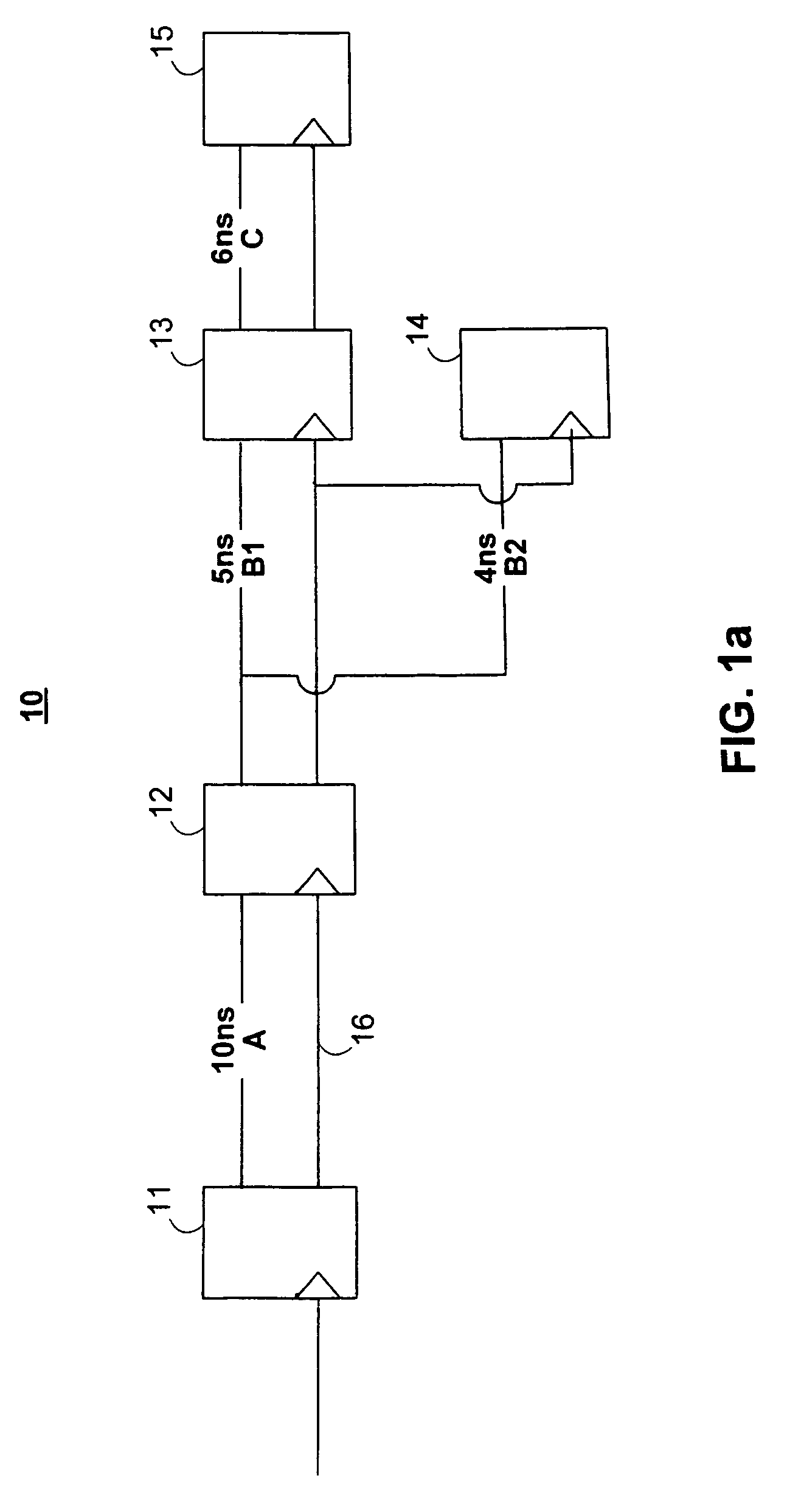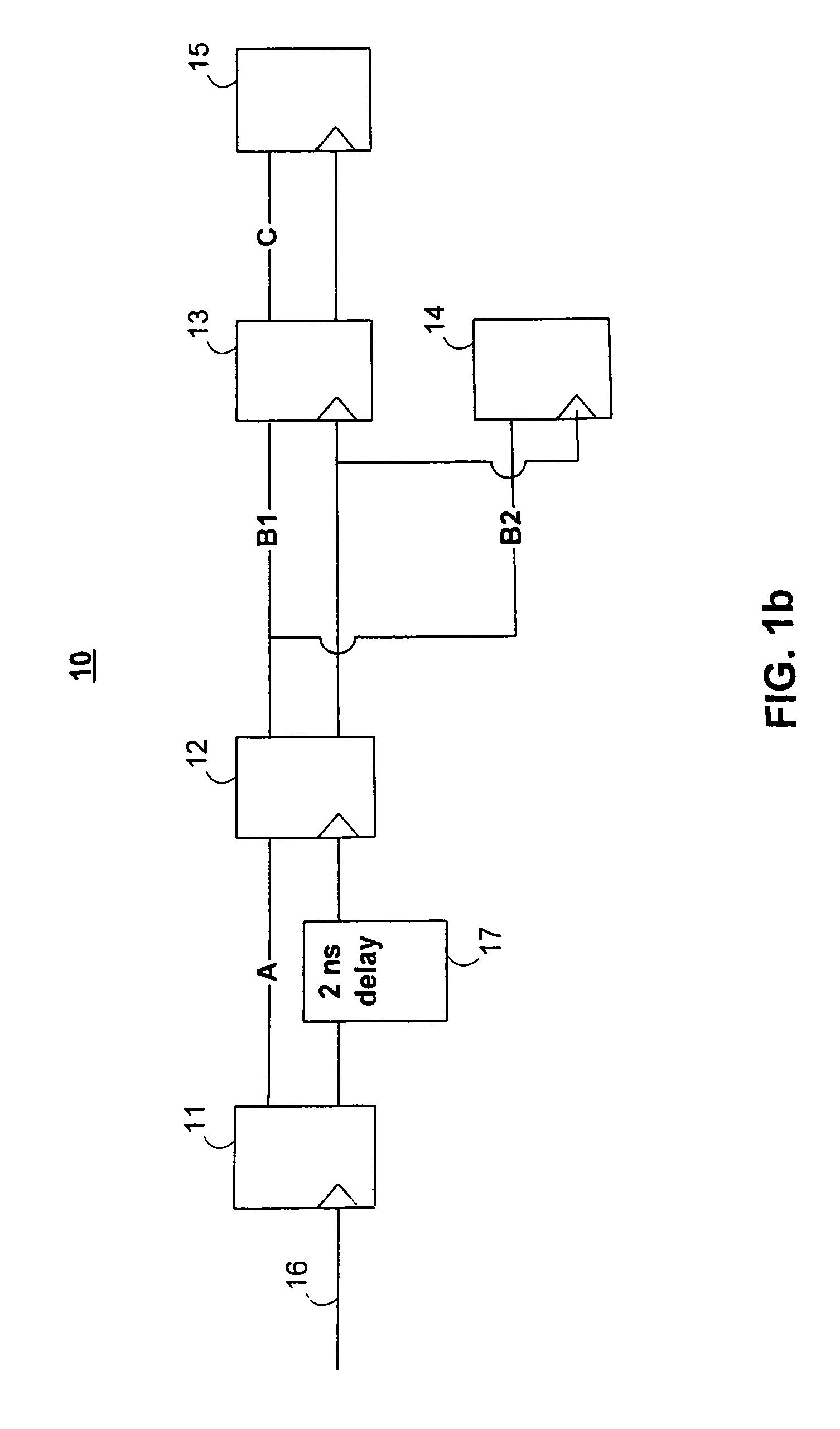Programmable logic devices with skewed clocking signals
a programming logic and clocking signal technology, applied in the direction of generating/distributing signals, pulse techniques, instruments, etc., can solve the problems of non-trivial optimization of pld circuit designs with a interconnections, large number of device elements in modern-day plds, and large number of device elements in pld circuit designs. achieve the effect of improving pld circuit performance and enhancing the architecture of programmable logic devices
- Summary
- Abstract
- Description
- Claims
- Application Information
AI Technical Summary
Benefits of technology
Problems solved by technology
Method used
Image
Examples
Embodiment Construction
[0028]The concept of clock skew insertion in PLD circuits to improve circuit frequency performance may be understood by reference to an illustrative circuit 10 portion shown in FIGS. 1a and 1b. Circuit 10 portion includes a chain of interconnected registers. FIG. 1a shows, for example, interconnected registers 11, 12, 13, 14 and 15, which are clocked by a clock signal propagating on clock line 16. Data signals are transmitted from register 11 to register 12 over data path A, from registers 12 to registers 13 and 14 over data paths B1 and B2, respectively, and from register 13 to register 15 over data path C. The path lengths (delays) A, B1, B2, and C, may, for example, be about 10 ns, 5 ns, 4 ns, and 6 ns, respectively. Circuit 10 has a maximum operating frequency Fmax (which is inversely related to the longest data path, A=10 ns) of about 100 MHz. FIG. 1b shows modified circuit 10 in which delay circuit 17 inserts a 2 ns delay in the clock signal to register 12 clock input. This in...
PUM
 Login to View More
Login to View More Abstract
Description
Claims
Application Information
 Login to View More
Login to View More - R&D
- Intellectual Property
- Life Sciences
- Materials
- Tech Scout
- Unparalleled Data Quality
- Higher Quality Content
- 60% Fewer Hallucinations
Browse by: Latest US Patents, China's latest patents, Technical Efficacy Thesaurus, Application Domain, Technology Topic, Popular Technical Reports.
© 2025 PatSnap. All rights reserved.Legal|Privacy policy|Modern Slavery Act Transparency Statement|Sitemap|About US| Contact US: help@patsnap.com



